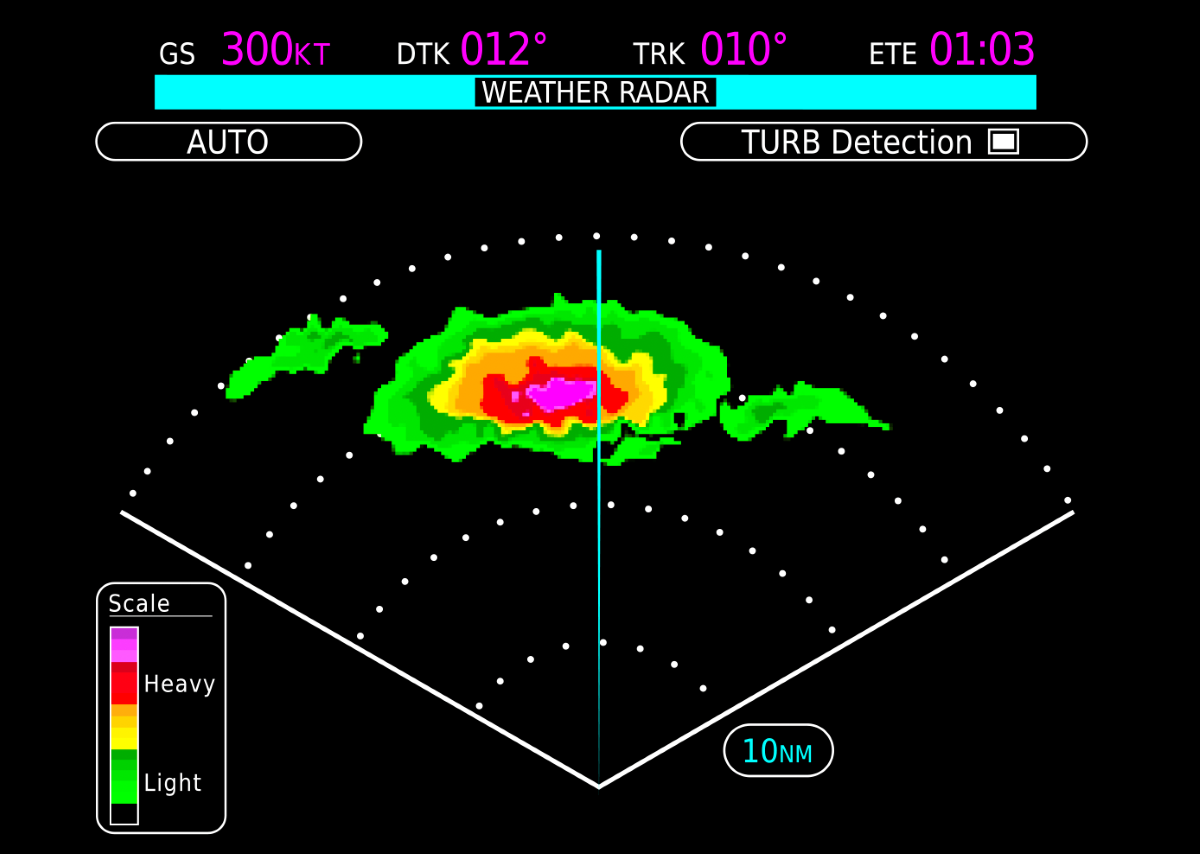Cirrus Vision Jet Gets Auto Radar, Cirrus IQ
The composite, real-time radar picture provides pilots with great tactical and strategic weather advantages.

The new Auto Radar function on the Cirrus Vision Jet creates a composite picture of any convection ahead at a selected range. [Courtesy: Cirrus Aircraft]
On his way into the Hagerstown Regional Airport (KHGR) on Monday evening, Cirrus Vision Jet product line executive director Matt Bergwall had ample opportunity to use the latest addition to the SF50’s avionics suite. With thunderstorm cells training in a line that stretched from western Virginia up through Pennsylvania, the Auto Radar powered by Garmin on the jet’s Perspective-integrated flight deck allowed him to both strategically and tactically skirt the storms. We spent our flight down to Knoxville’s McGhee-Tyson Airport (KTYS) in Tennessee searching for more to sweep—when normally we’d do the opposite.
Cirrus announced the news on Wednesday morning, along with the compatibility of the Cirrus IQ app with the Vision Jet, allowing pilots to enjoy increased connectivity with the airplane whether they are physically close to it or not.
“Cirrus Aircraft incorporates intelligent and award-winning innovations into its ecosystem to make flying simpler, safer, and more approachable for the pilot and passengers,” said Zean Nielsen, CEO of Cirrus Aircraft. “The award-winning Vision Jet is a testament to our team’s ongoing dedication to advancing the personal aviation industry. Over the years, the Cirrus Airframe Parachute System (CAPS) and Safe Return Autoland have revolutionized the personal aviation industry. Now with Auto Radar and Cirrus IQ connectivity, pilots have more situational awareness inflight and can streamline the preflight process.”
Auto Radar Advantages
The Auto Radar functionality comes as an upgrade to Garmin’s customized GWX 8000 weather radar, utilizing a 10-inch antenna in the nose cone of the Vision Jet. This was an update from the previous GWX 75 radar used in the first-generation SF50.
Auto Radar builds on the “smart” features and now allows the pilot to select a range at which the system automatically scans the wedge ahead of the airplane. After a few passes—each consisting of scans at a multitude of tilt positions—it builds and displays a composite picture of any convection ahead. It profiles volumetrically any areas of precipitation to deliver this real-time view.
Cirrus IQ Functions
The Cirrus IQ app has been enjoyed by SR-series pilots for a couple of years now, with its ability to connect the pilot to the airplane—and for the airplane to automatically download data postflight. With the addition of LTE hardware on the Vision Jet, SF50 pilots can now take advantage of the ability to see fuel status and TKS solution and oxygen levels, regardless of how far they are from the airplane.
This is no small thing when you—for example—have shut down the airplane prior to when the line service person approaches to take your fuel order, and you forgot to check one last time.
The hardware to power Cirrus IQ is standard on new Vision Jet G2+ aircraft, while Auto Radar comes as part of the Enhanced Awareness Package option. The Cirrus IQ app is available to all owners with an active JetStream account.

Sign-up for newsletters & special offers!
Get the latest FLYING stories & special offers delivered directly to your inbox






